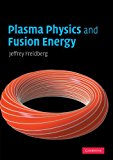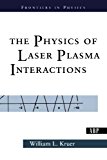Has Lockeed Martin Solved the Energy Problem?
Lockeed’s Charles Chase has created a bit of excitement by claiming that the Skunkworks team is on the verge of solving the world’s energy problem with a new type of fusion device. His 14 minute talk, which you can see below, is rather engaging.
While I wish them success, the talk gives little reason to believe that they will be able to create a viable fusion device, or indeed that they will progress much further than their current preliminary experiments.
In the few minutes devoted to technical details, the speaker misdefines the plasma beta (defined correctly on the displayed slide, and no doubt just a verbal typo) and claims that the Lockheed device operates at a beta of almost one. The conventional understanding would be that such a device would not be stable for any significant period of time. However, Chase does not say precisely which version of the beta parameter he has in mind. He then suggests that this is inherently far superior the lower beta operation of tokamaks and gives a misleading description of their design. He seems to suggest that the tokamak concept is inherently irrational. While, at this point, there is little reason to believe that tokamaks will solve the world’s energy problems either, they are of course the product of rational design decisions, guided by our best understanding of plasma behavior.
We are not provided very many details of Lockeed’s device. It is cylindrical, and the plasma is heated by RF. Apparently it works because the imposed magnetic confinement field is very clever. As Chase describes it, the field lines have a very “good” shape, curving just the right way, and there are “very few” open field lines along which the plasma might escape.
At this point it’s not too hard to read between the lines. The history of clever fusion ideas is littered with the corpses of magnetic field configurations that were almost perfect, except for one little hole. That’s where the plasma squirts out. It’s like designing a scuba tank with “very few” holes in it. The fact that, from the one experimental picture offered in the talk, there seem to be coils inside the plasma volume, and the plasma seems to be designed to crash right into the wall, does not inspire further confidence.
Of course, since the details allowed to leak out of this highly secretive unit within a secretive defense contractor are carefully controlled, we can’t rule out the possibility that they might be on to something. This small team might have figured out what has eluded many very brilliant scientists for 60 years. But the odds of this are very low, especially as this type of research, to be honest and vigorous, is best conducted out in the open, under the scrutiny of skeptical peers, rather than by an insular group in a secret facility.
Update: Oct. 15th, 2014.



